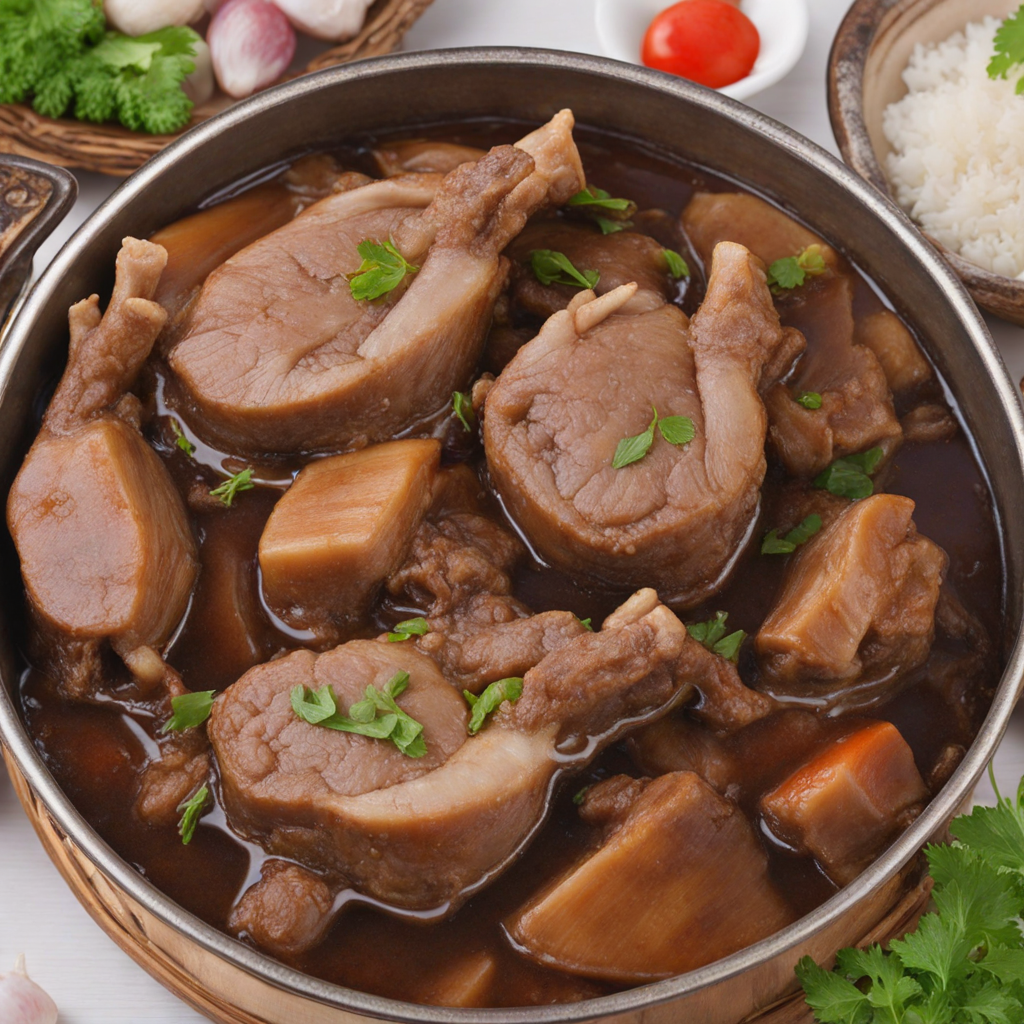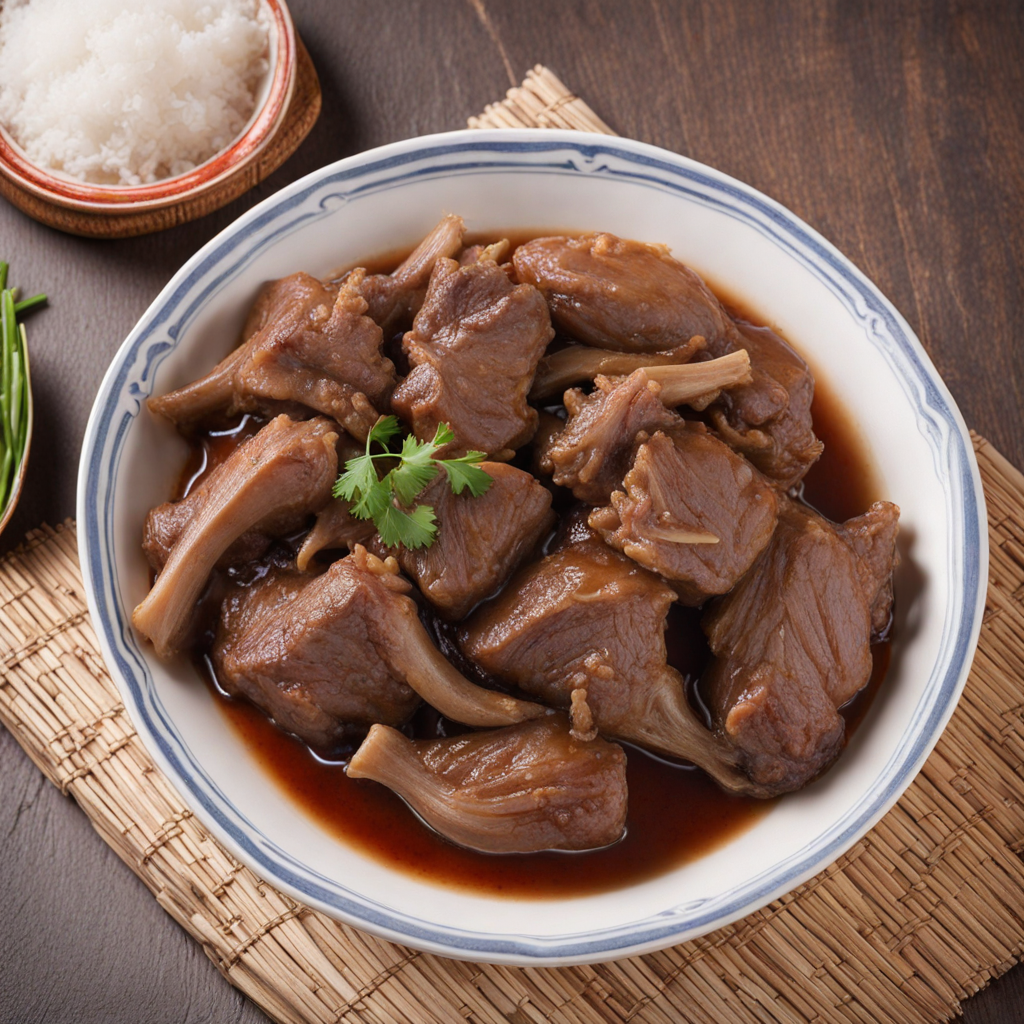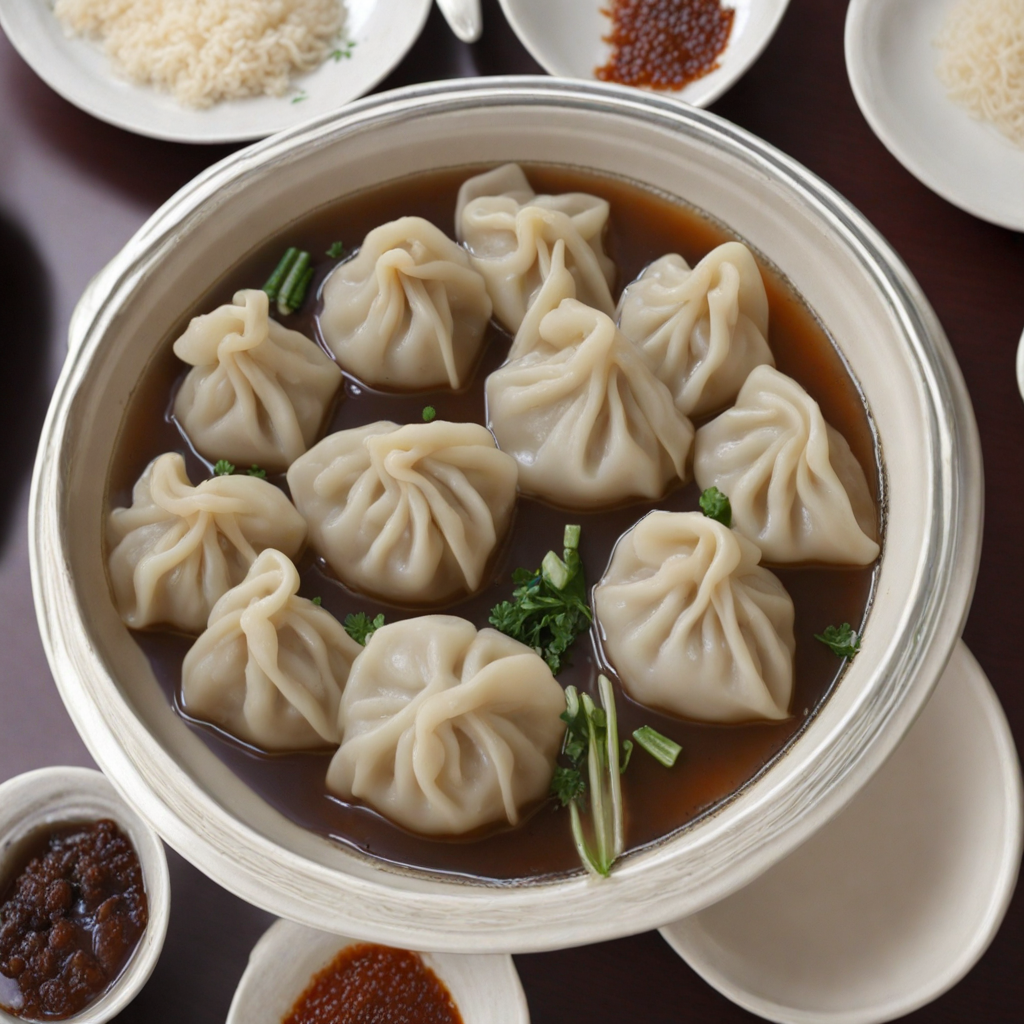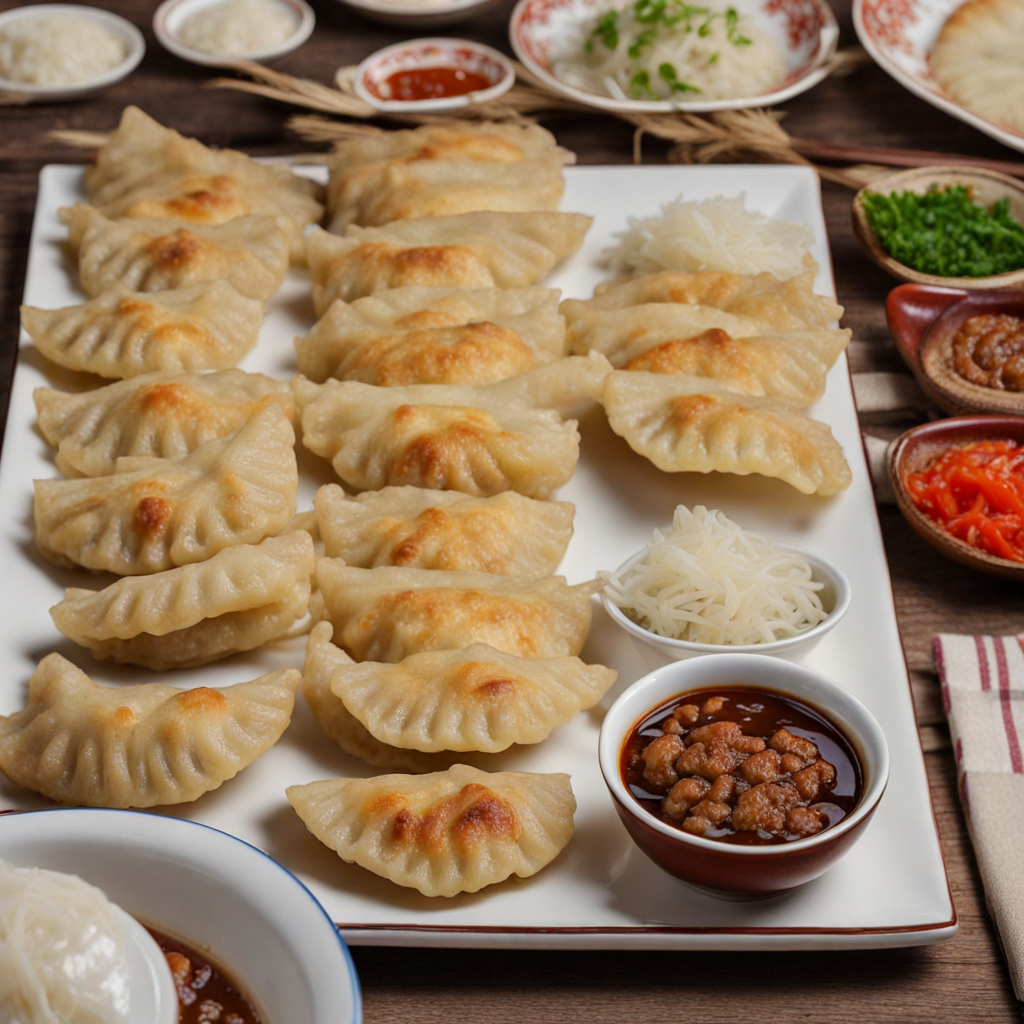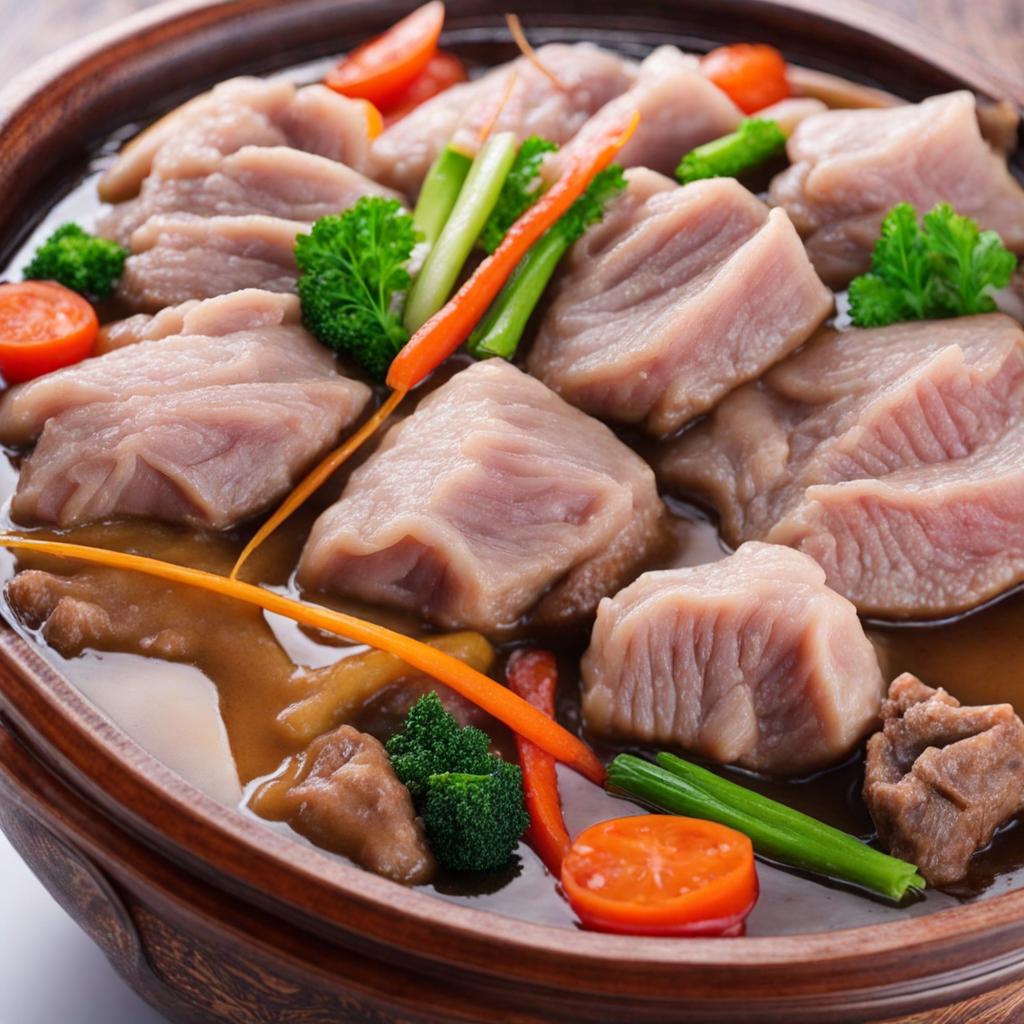Uuts
Uuts is a traditional Mongolian dish that encapsulates the essence of nomadic cuisine, a staple that reflects the country’s rich pastoral heritage. This dish primarily consists of mutton or goat meat, which is prized for its flavor and tenderness. The meat is often slow-cooked with a mix of aromatic spices, including garlic and black pepper, allowing the natural juices to meld with the spices and create a savory broth. The cooking method emphasizes simplicity and the quality of the ingredients, often using a traditional steamer or pot over an open flame, which enhances the rich, earthy flavors typical of Mongolian cooking. Another defining feature of Uuts is its accompanying side dish, typically consisting of steamed dumplings known as buuz, which are filled with a mixture of minced meat and onions. These dumplings are a beloved element of Mongolian cuisine, providing a delightful contrast to the tender meat of the Uuts. The combination creates a harmonious balance of textures, with the juicy meat and the soft, chewy dumplings offering a satisfying experience for the palate. The dish is usually garnished with fresh herbs or a sprinkle of sesame seeds, adding a layer of freshness and visual appeal. Uuts is not just a meal; it is a communal experience often enjoyed during gatherings or celebrations. Traditionally served in a large bowl, it encourages sharing among family and friends, reflecting the strong sense of community in Mongolian culture. The hearty nature of the dish makes it perfect for the colder climate, providing warmth and nourishment. For those seeking to discover new flavors, Uuts offers an authentic taste of Mongolia's culinary heritage, showcasing the unique ingredients and cooking techniques that have been passed down through generations.
How It Became This Dish
The History of Үүц: A Culinary Staple of Mongolia #### Introduction In the vast, rugged landscapes of Mongolia, where the steppe stretches endlessly under a dome of sky, food is not just sustenance; it is a reflection of the harsh yet beautiful environment and a testament to the nomadic way of life. One dish that encapsulates this deep connection to the land and culture is Үүц (pronounced “üts”). A traditional Mongolian dumpling, Үүц embodies the essence of Mongolian cuisine, characterized by its simplicity, heartiness, and the spirit of community. #### Origins of Үүц The origins of Үүц can be traced back to the nomadic tribes of Mongolia, who have inhabited the region for thousands of years. These tribes relied heavily on livestock for food, clothing, and shelter, shaping a culinary tradition based on the availability of local ingredients. The primary meats used in Үүц are mutton or beef, which are staples of the Mongolian diet, often complemented by locally sourced vegetables such as onions and potatoes. The name “Үүц” itself has roots in the Mongolian language, where it signifies “to wrap” or “to cover.” This is highly reflective of the preparation method for the dumplings, which involves encasing a filling within a thin layer of dough, a technique that can be observed across various cultures, from the dumplings of China to the pierogi of Eastern Europe. However, what sets Үүц apart is its unique flavor profile and the cultural significance it has garnered over the centuries. #### Cultural Significance In Mongolia, food is intertwined with cultural practices, traditions, and social interactions. The preparation and consumption of Үүц often occur during significant communal gatherings, celebrations, and festivals, such as the Naadam Festival, which celebrates the "Three Manly Games": wrestling, horse racing, and archery. During these events, families come together to prepare and enjoy various dishes, with Үүц often taking center stage due to its adaptability and the comfort it provides. Moreover, the act of making Үүц is a communal affair. Traditionally, women gather to prepare the dumplings, passing down recipes and techniques from generation to generation. This practice fosters a sense of kinship and cooperation, reinforcing the social fabric of Mongolian society. The sharing of food is an integral part of Mongolian culture, and serving Үүц to guests is considered a sign of hospitality and respect. #### Development Over Time As Mongolia transitioned through various historical periods, including the Mongol Empire and Soviet influence, the preparation and ingredients of Үүц evolved. During the time of the Mongol Empire in the 13th century, the extensive trade routes established by Genghis Khan allowed for the exchange of culinary practices and ingredients between different cultures. It is believed that the concept of dumplings might have been influenced by interactions with Chinese cuisine, which has a long-standing tradition of dumpling-making. In the 20th century, under Soviet rule, Mongolia experienced significant changes in agricultural practices and food availability. The introduction of new technologies and farming methods allowed for a slight diversification of ingredients, which influenced the preparation of Үүц. For instance, the inclusion of more vegetables became common, adapting to changing tastes and nutritional needs. Nevertheless, the core elements of the dish remained unchanged, preserving its cultural heritage. Today, modern Mongolian chefs are reimagining traditional recipes, incorporating contemporary culinary techniques while respecting the essence of the dish. This evolution has led to variations of Үүц that utilize different meats, such as chicken or even fish, and innovative fillings that blend traditional flavors with modern dietary preferences. #### Preparation and Ingredients The preparation of Үүц is an event in itself, characterized by several steps that involve skill and patience. The dough is made from simple ingredients: flour, water, and a pinch of salt. It is kneaded until smooth, then rolled out into thin circles. The filling, typically a mixture of minced meat, onions, and sometimes potatoes or carrots, is seasoned with salt and pepper, and placed in the center of each dough circle. The edges are carefully folded and pinched together to create a decorative seal, ensuring that the filling stays contained during cooking. Traditionally, Үүц is steamed, but it can also be boiled or pan-fried, resulting in a delightful contrast of textures. When served, it is often accompanied by a dipping sauce, which can range from soy sauce to a spicy vinegar-based concoction, enhancing the flavors and providing a refreshing balance to the richness of the dumplings. #### Modern-Day Relevance In contemporary Mongolia, Үүц has transcended its role as a traditional dish and has become a symbol of national identity. It symbolizes resilience and adaptability, qualities that are deeply ingrained in the Mongolian spirit. As globalization takes root, many Mongolians are embracing their culinary heritage, promoting dishes like Үүц in international culinary festivals and restaurants, where they share the flavors and stories of their homeland with a broader audience. Furthermore, the rise of social media has allowed for the sharing of recipes, cooking demonstrations, and cultural stories related to Үүц, helping to preserve its significance among younger generations. Cooking classes and culinary tours in Mongolia often include a lesson on making Үүц, allowing participants to engage with the culture in a tangible way. #### Conclusion The history of Үүц is not merely a tale of a culinary dish; it is a narrative that encapsulates the Mongolian way of life, the connection to the land, and the importance of community. From its humble origins in the nomadic lifestyle to its current status as a cherished cultural symbol, Үүц continues to thrive, adapting to the times while remaining rooted in tradition. As Mongolia looks to the future, the legacy of Үүц will undoubtedly continue to be a source of pride and a delicious reminder of the rich history that flavors every bite.
You may like
Discover local flavors from Mongolia


